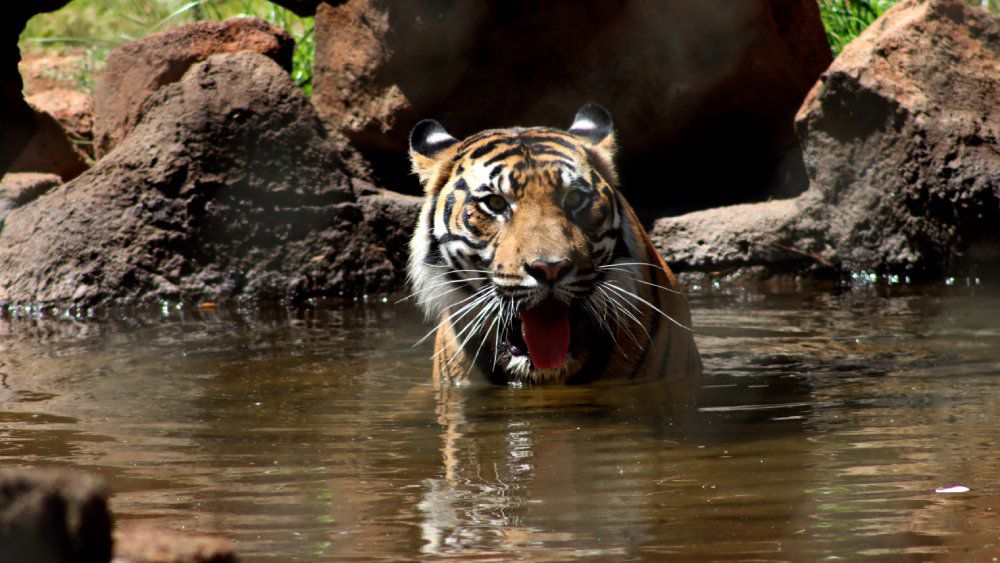HONOLULU — On Saturday, 6-year-old Anala, Honolulu Zoo’s resident Sumatran tiger, underwent a “novel artificial insemination procedure” with the assistance of a team of reproductive specialists from Omaha’s Henry Doorly Zoo, according to a news release.
Anala’s keepers helped prepare her for the procedure by collecting daily fecal samples and observing behavior changes to track her hormone cycling to determine her ovulation date. They also trained her to accept voluntary injections and oral medication.
“We are fortunate to be afforded this rare opportunity and extend our sincere appreciation to the Henry Doorly Zoo for sending their team to Honolulu to artificially inseminate Anala,” said Honolulu Zoo veterinarian Dr. Jill Yoshicedo in the release.
“Honolulu Zoo’s veterinary team kept Anala safely under anesthesia while she was transported from the tiger exhibit into the surgery room at the zoo’s veterinary clinic and placed on a ventilator. She received supportive medications, fluids, warming and leg massages, while her vitals and blood chemistry values were carefully monitored throughout the two hour-long procedure,” said Yoshicedo.
The novel procedure, laparoscopic oviductal artificial insemination, has only been performed in a handful of tigers, according to the Honolulu Zoo. This particular procedure allows the sperm to be directly deposited into the female’s oviducts next to where her eggs should ovulate. Because of this, the number of spermatozoa needed is much less — only one million compared to over 100 million needed for a non-surgical transcervical approach.
Cryopreserved spermatozoa were collected from a male Sumatran tiger at another Association of Zoos & Aquariums-accredited zoo.
AI has led to successful births in other species, such as domestic cats, wolves, rhinos, oryx, clouded leopards, and the Tsushima leopard cat. However, so far, AI has led to just four pregnancies in tigers with an “overall pregnancy rate of less than 20% and no live births.”
Because of the limited numbers of Sumatran tigers remaining in captivity, the Sumatran Tiger Species Survival Plan continues its efforts to achieve conception and live birth through AI matchmaking, as well as the ongoing physical relocation of suitable matches for reproduction.
The benefits of AI include potential offspring regardless of compatibility or physical location of the parents and the potential for male Sumatran tigers in the wild to improve genetic diversity in the captive population, according to the release.
Following the procedure, Anala is in full recovery. Zookeepers will confirm pregnancy if her hormone levels remain elevated for two months after conception or if a fetus becomes detectable on the abdominal ultrasound. The tiger’s typical gestation period is 92 to 113 days.
If Anala doesn’t become pregnant through the AI procedure, the Honolulu Zoo will welcome a male tiger as a potential mate in 2024.
According to the zoo, Sumatran tigers are the smallest subspecies of tigers and are native to the Indonesian island of Sumatra. Habitat loss, poaching and loss of prey animals due to deforestation are the biggest threats to this critically endangered species, with less than 400 in their native habitat. Their typical lifespan is from 15 to 20 years.
Sarah Yamanaka covers events, environmental and community news for Spectrum News Hawaii. She can be reached at sarah.yamanaka@charter.com.



